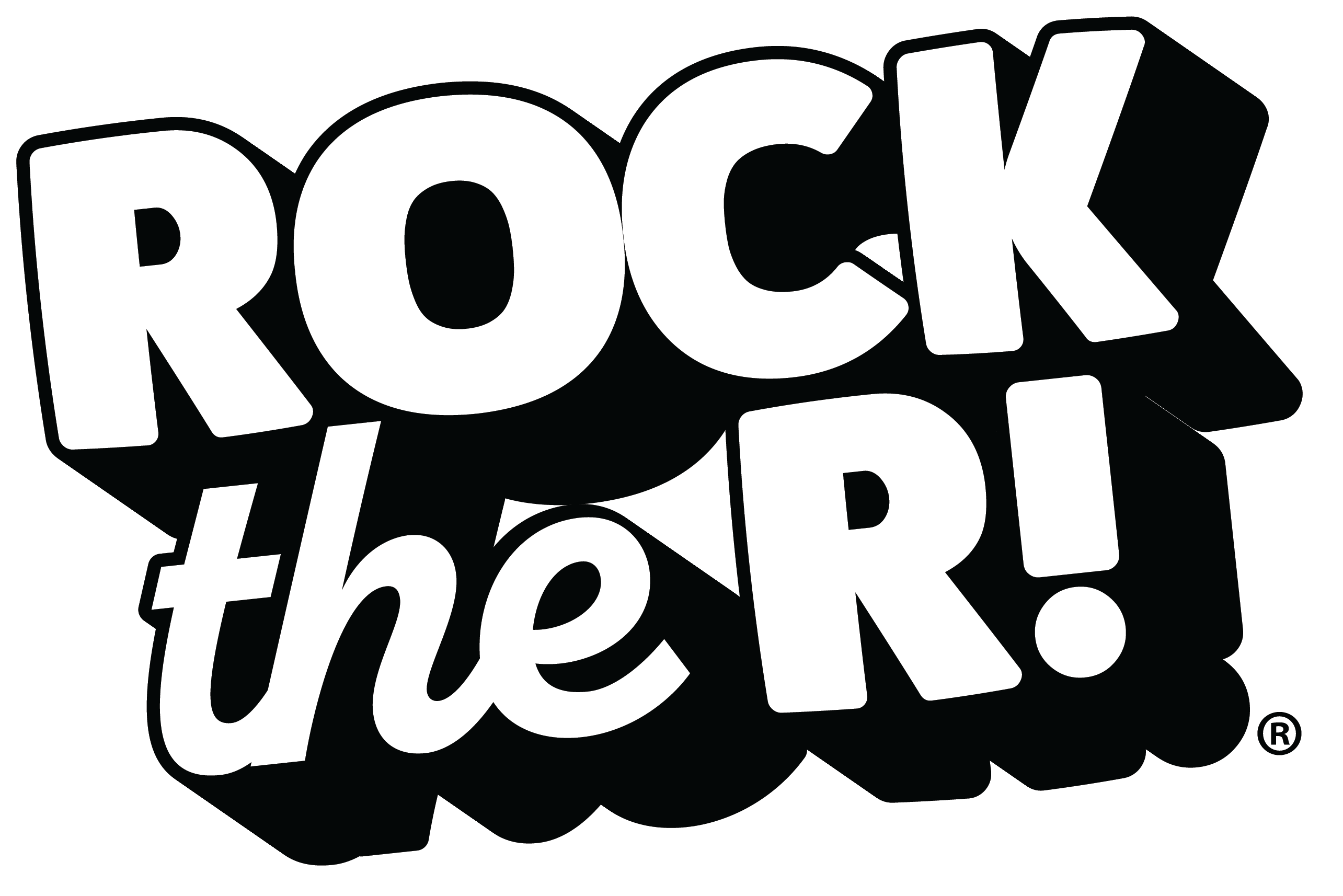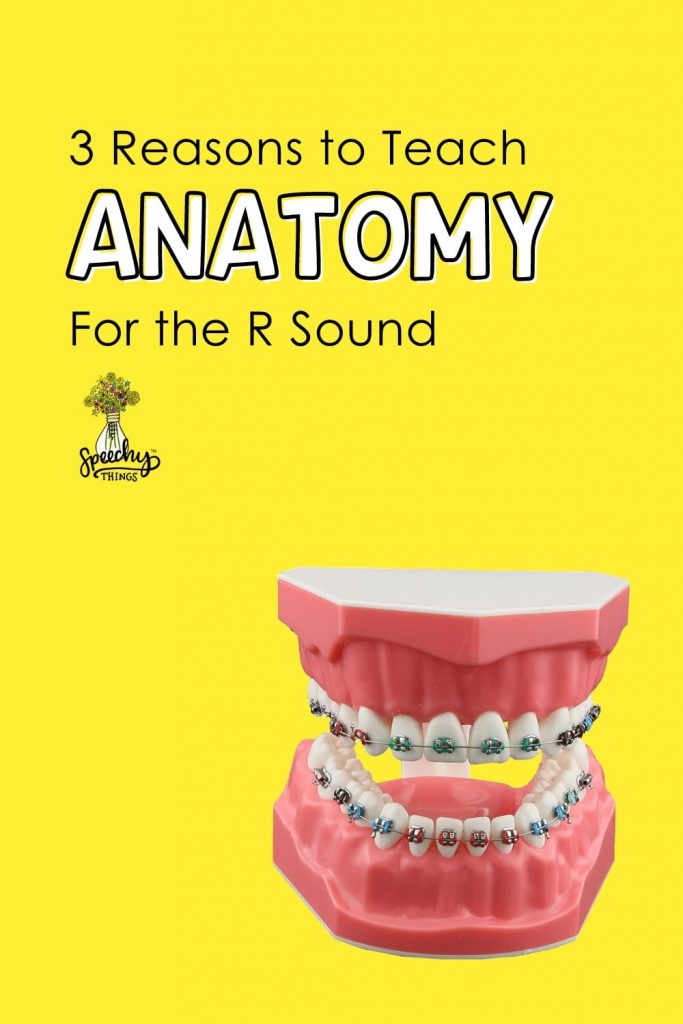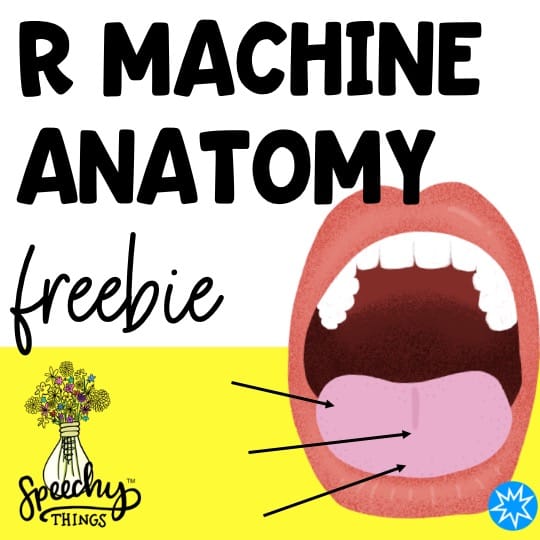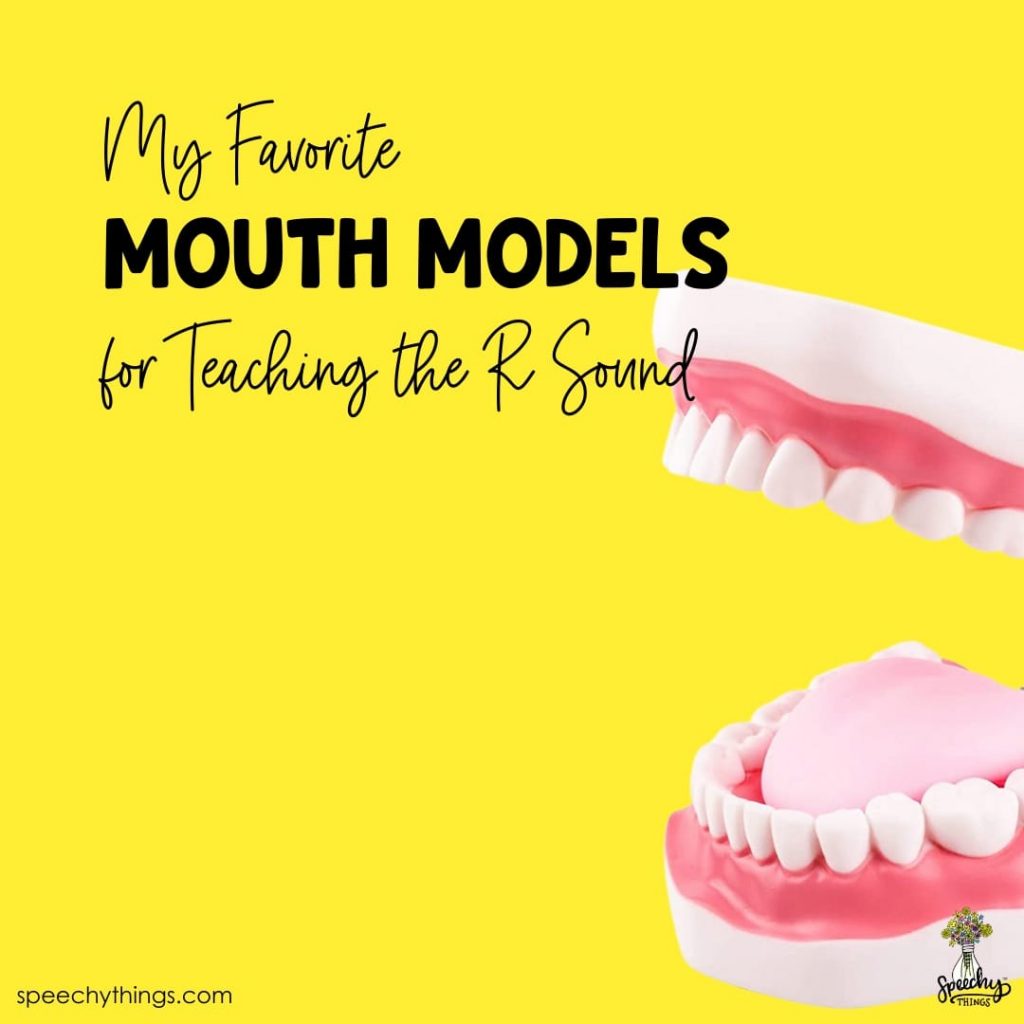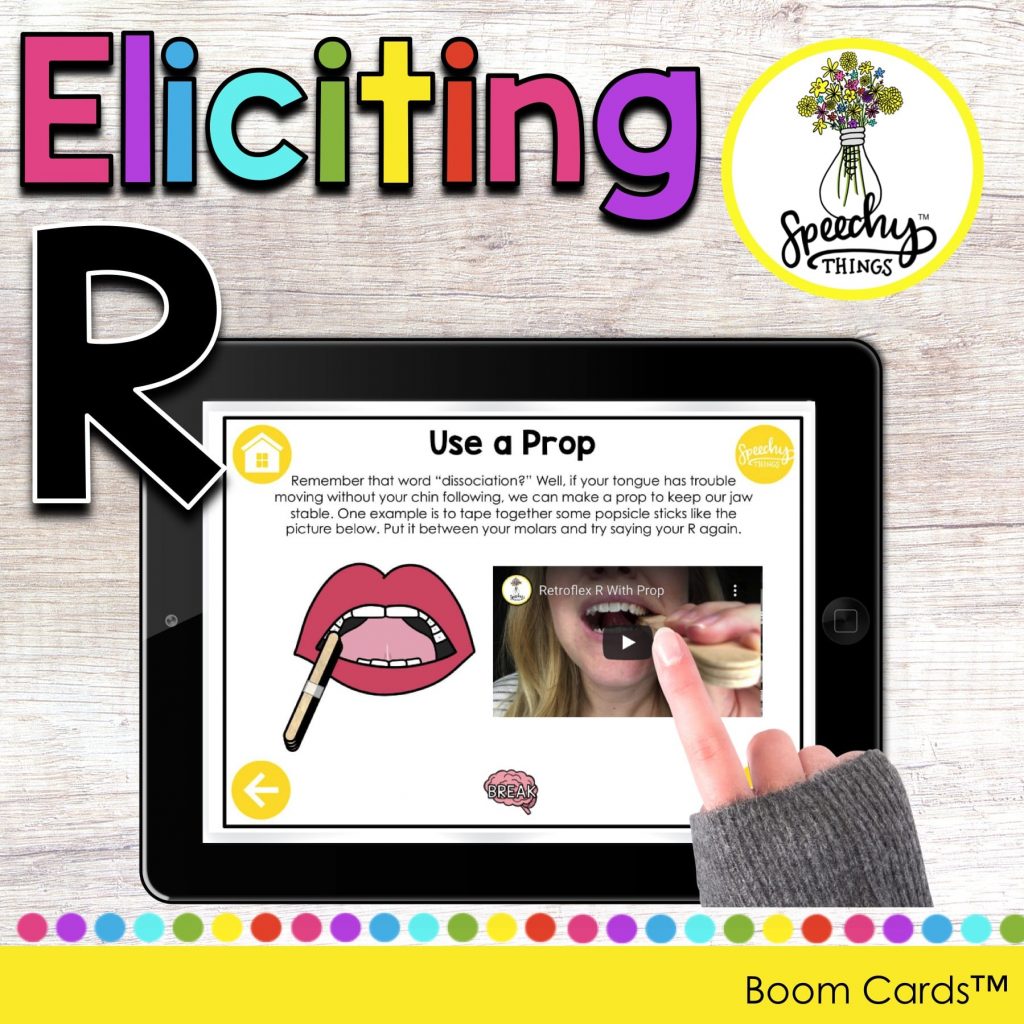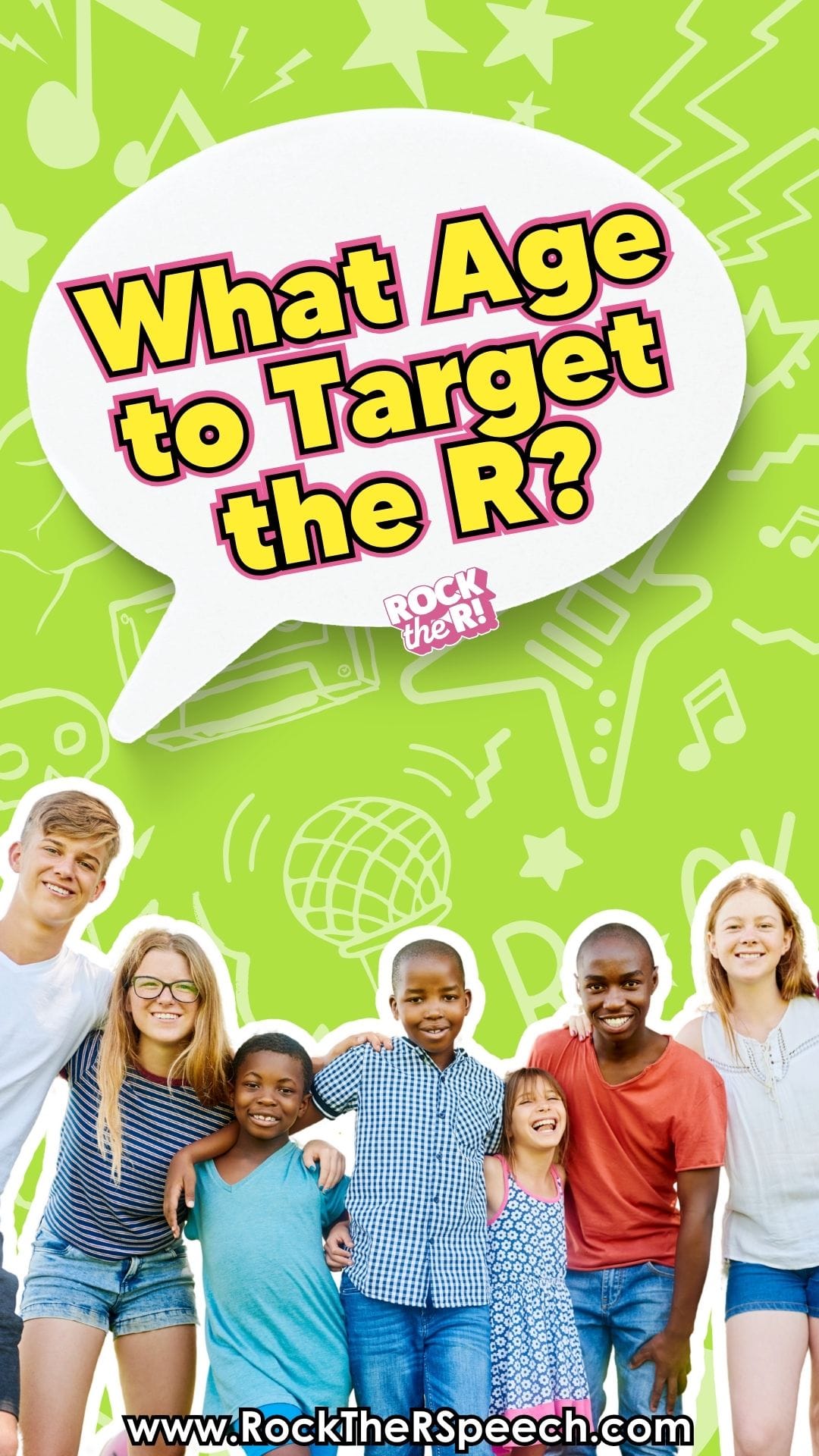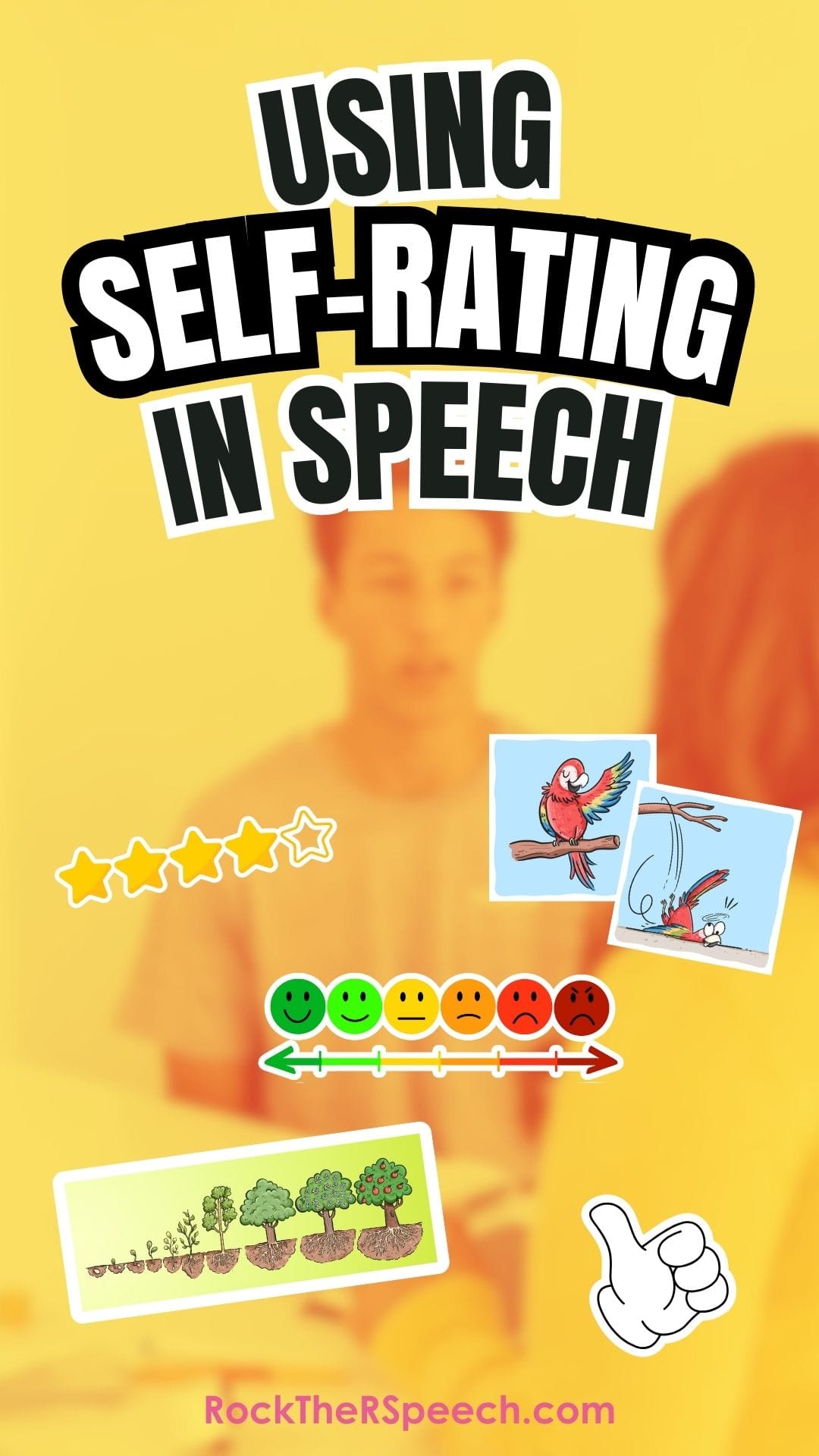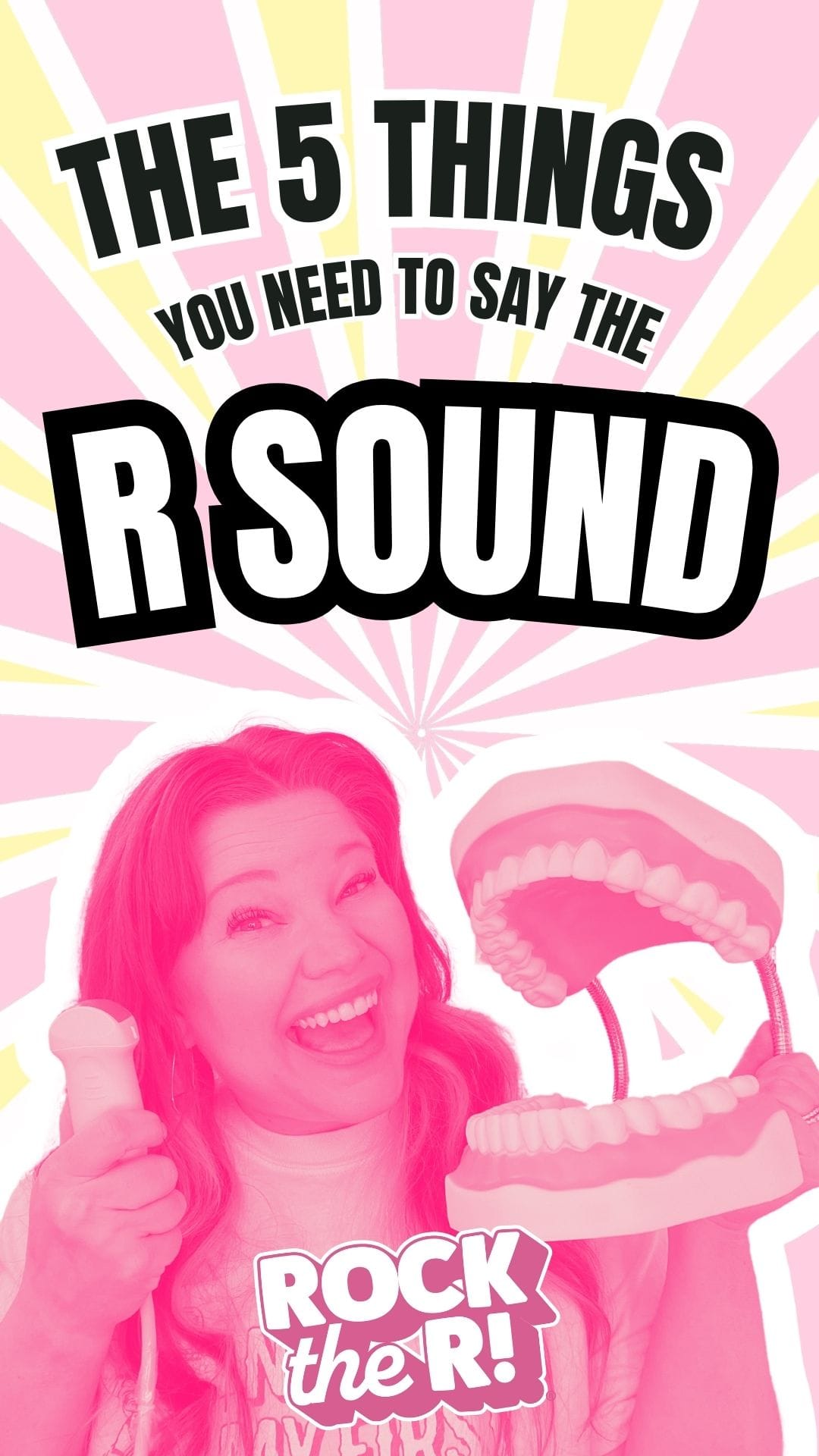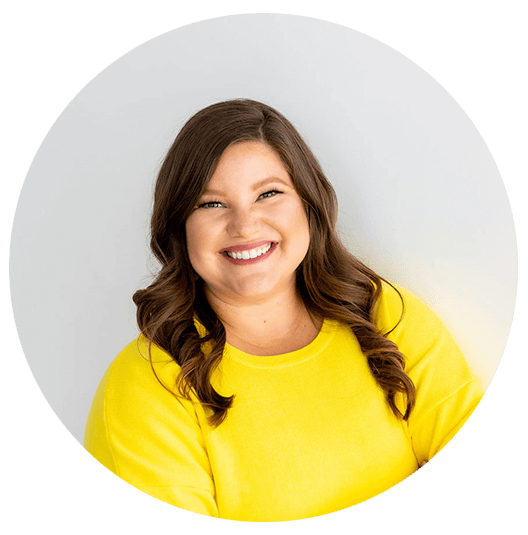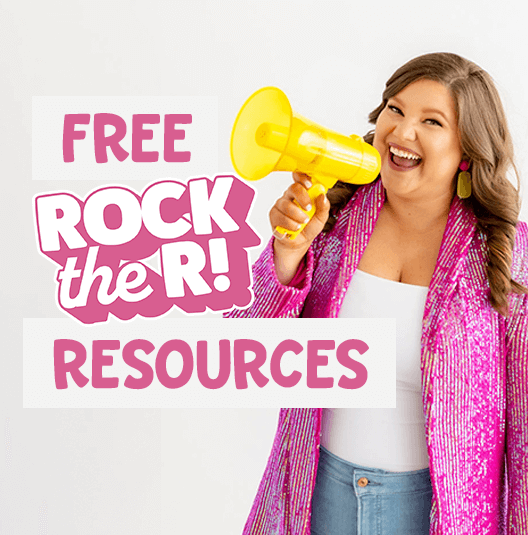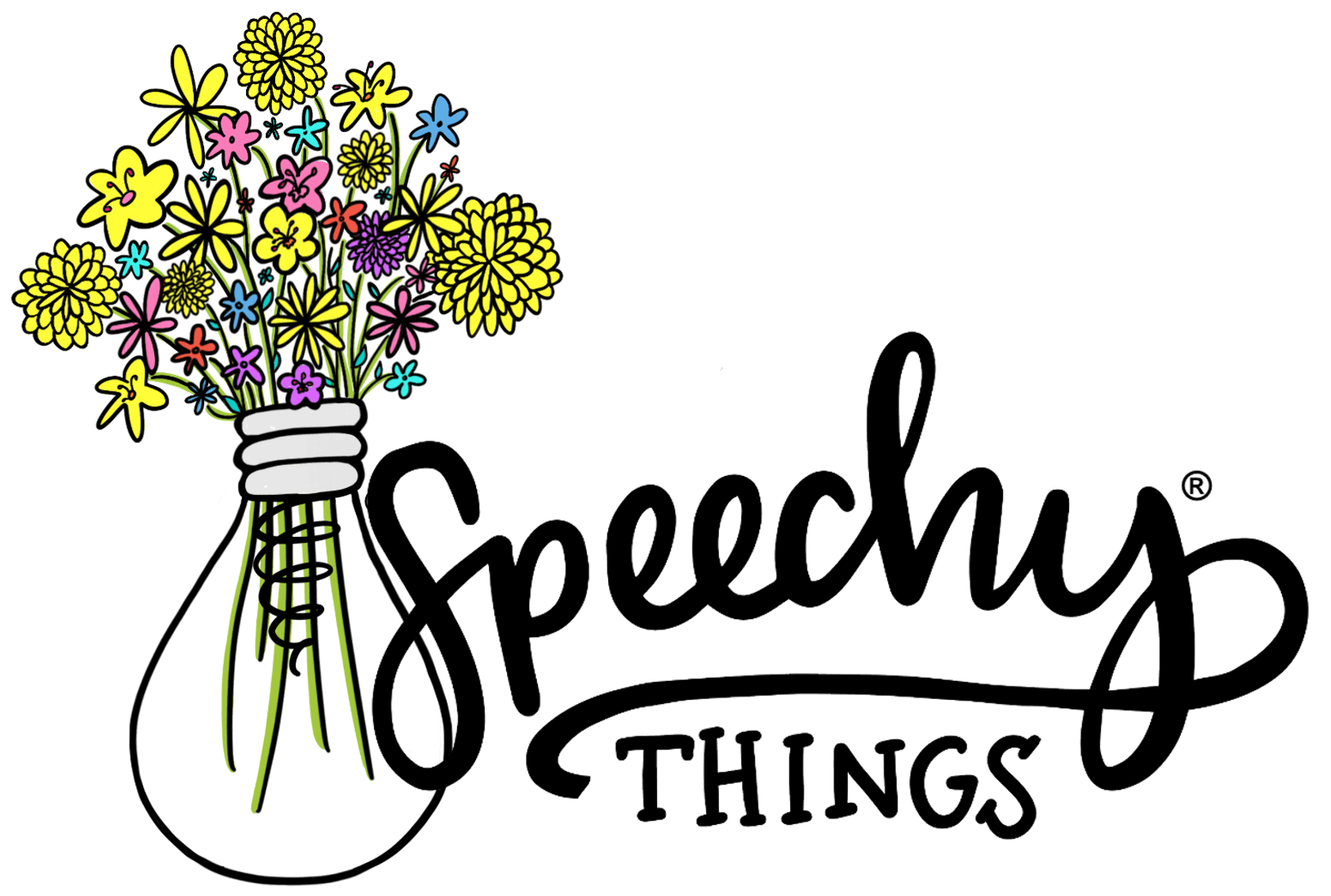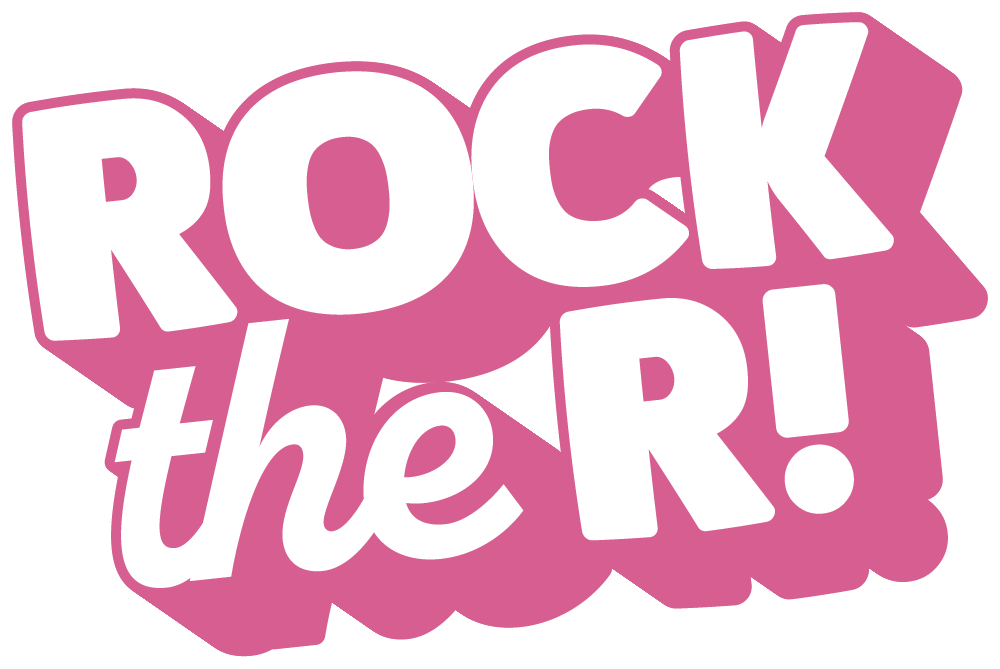At the beginning of every speech therapy relationship with a new “R Kid,” I work on anatomy. Why? Because R is so darn hard!
When I cue them to do something with their articulators, I want them to know exactly what I’m referring to. In order to accomplish this, we need a common vocabulary for their “R machine.” Here are three reasons why this is important for working on the r sound in speech therapy:
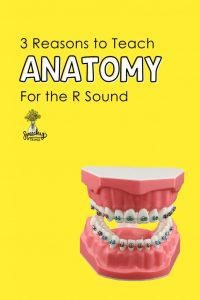
1. THERE’S NO GOOD “ANCHOR” FOR THE TONGUE
(Hitchcock, Harel, & Byun, 2015)
R seems to just “float in space” for some kids. The only points of contact for the tongue are the sides of the tongue touching the top molars or gums. For most other consonants- there’s a very clear (and visible) point of contact.
2. MOST CONSONANTS HAVE ONLY ONE POINT OF L INGUAL CONSTRICTION… BUT R HAS TWO
(Hitchcock, Harel, & Byun, 2017)
This is a fancy way of saying for most consonants only one part of the tongue moves to change the resonance in the mouth. But for the R sound? Both the front AND back fo the tongue have to do something different.
3. YOU CAN’T SEE BOTH POINTS OF LINGUAL CONSTRICTION
(Hitchcock, Harel, & Byun, 2017)
You can’t see what the back of the tongue is doing for R… even though that’s arguably the most important component of making a proper R sound.
So what does all this mean??

“…teaching children the distinct parts of the tongue, and using specific terminology during treatment, may improve the effectiveness of cues.”
Preston, et al, 2020

It means we have to give really solid, concrete cues to our students when teaching them how to say the R sound. In order to accomplish this, we need a common vocabulary when discussing the articulators.
AWESOME. Now how do we go about this?? Try these tools!
By the way, I include anatomy lessons in both my best sellers- Teaching R (printable) and Eliciting R (boom cards). I want it to be easy for SLPs to access these activities on-the-go when diving into early R therapy.
Want even more ideas? Become a VIP!
Keep rockin’ that R!






